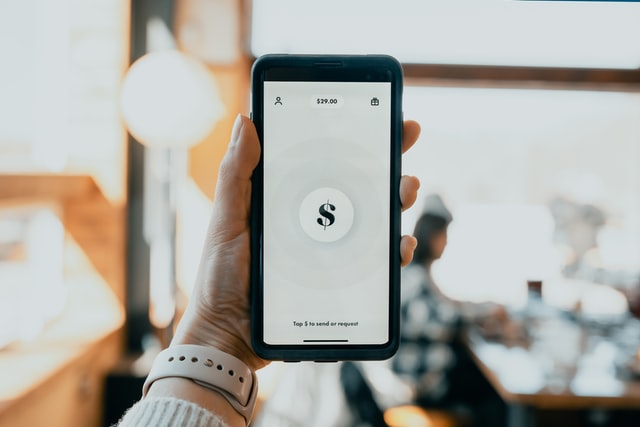The Covid-19 pandemic has become a real challenge for the banking sector: investment credit delivery reduction, ROE decrease, and bank valuations dropping throughout the world.
However, according to Deloitte’s research, the return on equity is going to return back to normal to 10.4% in 2025.
A dditionally, the recovery in the financial sector is expected to result in loans and potential net interest margin growth. Therefore, the prospects for the next few years are quite favorable even though the pandemic isn't over.
dditionally, the recovery in the financial sector is expected to result in loans and potential net interest margin growth. Therefore, the prospects for the next few years are quite favorable even though the pandemic isn't over.
In the banking sector, digital transformations have continued to gather momentum by developing top-notch software and revising new approaches. While there are many aspects of digitalization, the combination of legacy lending systems and rapid technological advancements have generated strong demand for alternative credit scoring.
In this article, you will discover how scoring solutions including AI and ML can be used to extract meaningful insights from non-traditional data sources such as social media sentiment, app usage, utility or phone bill payments, and public records to achieve precision in solvency evaluation.
Moreover, we’ll describe the key advantages of the credit scoring software solutions and explain how they will take your business to the next level.
What Is Traditional Credit Scoring, and Why It Can No Longer Perform as Effectively as in the Past?
Traditional credit scoring is a process associated with the creditworthiness evaluation that is conducted before concluding credit agreements. Once it's done, a loan applicant receives an individual credit score, which is presented as a 3-digit number.
The institutions use different ranges of scores, but the most popular is a 300-to-900 credit score scale. Generally, a credit score of high 600s and up to the mid-700s is considered good. Building and maintaining a good credit score is very significant as it can help customers get approved for lower interest rates and attractive terms.
Although the credit bureaus use different mathematical algorithms while calculating credit scores, there are the most important characteristics that are factored in when customers apply for credit:
- The first thing prospective debtors need to pay attention to before the lodging of an application is the payment history as it defines how consistently payments are made on time.
- The second most important factor that has an impact on credit scores is the level of outstanding debt a potential borrower owes. Experts recommend sticking to the 30% credit utilization rule, otherwise, it can actually hurt the credit score.
- Representing both active and closed credit accounts, a long credit history helps the lender to gauge the customer as a borrower.
- Maintaining a mix of revolving and installment credit indicates financial reliability to lenders.

With this traditional model, as we have seen, the procedure for credit score assessment involves quantitative and qualitative analysis. As a result, the possibility of unpleasant future events such as defaults and the risk of human intervention is eliminated.
Even though there are numerous benefits including objective measurement of credit risk and time-saving features, credit scoring results are not quite fair as the information, which is derived from credit bureaus, is insufficient to conduct a meaningful review; therefore, conventional methods of credit scoring can’t give an accurate picture of creditworthiness.
What Is Alternative Credit Scoring & Why Is It So Popular?
The methods used for credit scoring are evolving from traditional statistical techniques to innovative methods as the world is changing and a wide variety of new data sources are being created.
While lending institutions rely upon credit reports and scoring to decide whether an applicant can afford to repay debts, alternative credit scoring refers to the use of current and accurate data for creditworthiness assessment, such as a digital footprint, which is the online activity information about a particular person.
The use of alternative data sources and innovative algorithms in credit scoring may help enable greater access to the unbanked category and first-time debtors, thereby providing them with credit and an opportunity to start earning scores.
The alternative data that generate more accurate credit scores include the following sources:
- The better the payment history with utility providers, the easier it will be for a borrower to prove their ability to repay loans.
- Good rental payment reports can drastically beef up an applicant's reputation and credit score, and therefore access finance at better rates. And it is sometimes necessary for rent payments to be verified by the landlord.
- Asset ownership and steady employment have a beneficial effect on creditworthiness.
- POS and transaction data reports can demonstrate a consumer's spending behavior and the way they handle all aspects of finances.
- Self-reporting personal checking and savings information to the lenders might open up more opportunities to reach the financial goals.
- Analyzing mobile phone data including payments, subscriptions, income level, consumption and top-up pattern, social media information might bulk up the consumer’s credit score.
How Can AI and ML Enhance Credit Risk Assessment?
Being a technological innovator for the foreseeable future, AI along with machine learning are used to analyze large amounts of alternative credit datasets and identify patterns in the different types of data that will help assess a prospective borrower’s behavior and financial reliability.
Considering real-time factors of the potential loan applicant's creditworthiness and making precise profit predictions, AI models transform credit scoring by identifying borrowers with high potential and thus include them in the credit programs. As a result, integrating AI into the financial sector minimizes risk exposures and provides more individualized credit score assessments.
One of the most effective unsupervised learning techniques applied in data analysis is clustering, which aims to obtain natural groups from the data. Based on the principle of maximizing the similarity between the elements of a group, clustering forms data groups. The algorithms find an appropriate cluster for the borrower and use the average default assessment of the cluster to estimate the borrower's financial reliability.

The machine learning credit scoring solution provides a good understanding of credit risk in lending to consumers as they allow for faster and cost-effective data processing and detect fraud traits due to the ability of algorithms to learn from fraud patterns and quickly identify them in financial operations.
With these functionalities, it is no surprise that lending institutions are actively augmenting their analytics tools with machine learning to process big data, produce better insights, improve risk management, and expand access to low-interest credit. The innovative credit scoring solution includes the following subphases of the machine learning algorithms:
- Access raw data
- Collect and group the input data
- Extract characteristics and properties from raw data
- Choose useful features
- Ensure the machine learning algorithm absorbs training data set to make predictions or perform given tasks
- Interpret results
Credit Scoring Software: Definition and Its Main Benefits
Credit scoring software is designed to optimize workflows between a creditor and customer including the accurate determination of the loan applicant's solvency and the possibility of defaults by processing both financial and non-financial data.
The technological scoring solutions extend opportunities for the import of critical information from both standard and alternative sources into the database to create an in-depth analysis and evaluate the solvency of the potential debtor.
Investing in a loan management system and credit scoring software brings a lot of benefits and advantages for both lenders and borrowers. Here are the 4 most important ones:
- Holistic Approach
Using credit scoring software draws a holistic picture of each applicant by taking into account more current financial and social information than earlier data as it builds a better understanding of their intention of paying back the debt.
- Fair Credit Decisions
Based only on the facts related to credit risk, the credit scoring software solutions made it possible for lenders to measure the creditworthiness of a loan applicant more objectively and eliminate the human factor that is common in manual underwriting.
- Instant Credit Scores
With the credit scoring solution, lenders can also significantly save time as the program speeds up decision-making by allowing them to approve an application as well as distinguish higher-risk borrowers immediately. Loan applicants receive credit assessment quicker without any quality or precision compromises.
- Increased Access to Credit
While traditional systems restrict borrowers with no credit history, alternative credit scoring software solutions open up an opportunity for such applicants by analyzing and giving a gauge of the overall financial health of applicants with no credit score.

Credit Scoring Software Implementation Process
Although the development of credit scoring software might be a bit challenging and requires a lot of resources and costs, a well-organized implementation plan will provide the efficiency of all processes and essential financial savings for your business. To make the implementation process go as smoothly as possible, consider the following steps:
- Identify credit scoring outcomes the organization would like to achieve
- Ensure you have sufficient data capabilities
- Leverage AI tools and machine learning in credit reporting
Usually, the credit scoring software implementation consists of a certain number of phases. Let's see six important stages that are employed during this process:
- Combining various internal data with external information to create a statistical credit scoring model.
- Measuring the likelihood of default by assigning consumers to risk classes based on their individual inability to pay obligations on time.
- Defining threshold values on the default probability scale, developing measures to be taken on risk-class customers, and establishing decision rules regarding the risk classes that may result in applications refusal, the conclusion of the contract, modifications of payment terms, and risk-adjusted interest rates.
- Using backtesting, an important part of credit scoring software implementation, as it verifies the credit scoring really fulfills the desired targets on the basis of customer data. The credit scoring calibration gives useful improvement clues of the developed model.
- Ensuring credit scoring system implemented as part of the risk management.
- Documenting the debtor- and credit-related data as well as the payment activities to keep technical and statistical maintenance of the scoring model and conduct a receivables risk assessment.
To Sum It All Up
Even though coronavirus factors strongly into the banking climate and economic situation remains fragile, you should still keep abreast of technology trends, opportunities, and innovations as there is a great deal of global financial transformations including fusion of technologies, cloud-based ERP, and automation continue apace. Otherwise, you are giving your competitors an edge.
As we can see from above, credit scoring software development emerges as one of the main focuses of the banking industry in the near future. At Intellectsoft, we bring together professionals with a solid background to provide customized solutions for various organizations to make the client’s credit scoring software more powerful that will meet all the customers’ needs.
Get in touch with our experts to find out more about our financial software development, credit scoring services, and the possibilities of working together. Our team at Intellectsoft would be happy to offer a free consultation and discuss opportunities that will help you grow your business exponentially.
